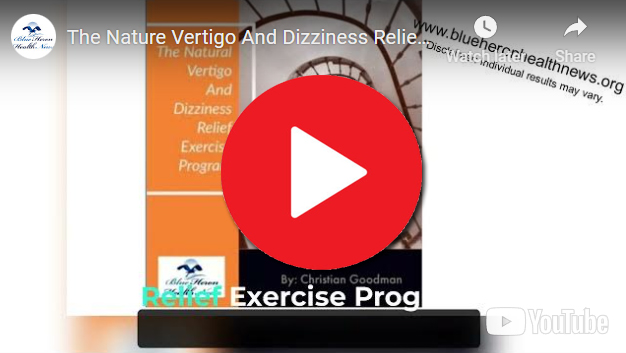
Vertigo is a sensation of spinning or dizziness that can significantly impact a person’s quality of life. The main cause of vertigo may vary from person to person, as it is often associated with underlying conditions affecting the balance system. To better understand the main cause of vertigo, it is important to delve into the intricacies of this debilitating condition.
Understanding Vertigo: An Overview
Vertigo is a type of dizziness characterized by a false sense of movement, typically a spinning sensation. It is crucial to differentiate vertigo from other forms of dizziness, as the underlying causes and treatments may differ.
Defining Vertigo: Vertigo is a symptom rather than a disease itself. It is commonly caused by disturbances in the inner ear or the brain.
Common Symptoms of Vertigo: In addition to the sensation of spinning, individuals with vertigo may experience nausea, vomiting, sweating, headache, and unsteadiness.
There are two main types of vertigo: peripheral vertigo and central vertigo. Peripheral vertigo is often related to problems in the inner ear, such as benign paroxysmal positional vertigo (BPPV), Meniere’s disease, or vestibular neuritis. On the other hand, central vertigo is usually associated with issues in the central nervous system, such as migraines, brain tumors, or multiple sclerosis.
Diagnosing vertigo can be challenging as it requires a thorough medical history, physical examination, and sometimes additional tests like an MRI or a CT scan. Treatment for vertigo depends on the underlying cause and may include medications, physical therapy, or in severe cases, surgery. It is essential for individuals experiencing vertigo to seek medical attention to determine the cause and receive appropriate management.
The Human Balance System and Vertigo
In order to understand the main cause of vertigo, it is important to have an appreciation for the human balance system. This complex system involves the inner ear, the brain, and various other components working together cohesively.
The Role of the Inner Ear: The inner ear plays a crucial role in maintaining balance by detecting motion and changes in head position. When there is a disruption in the inner ear, it can lead to vertigo.
The Brain’s Part in Balance: The brain receives signals from the inner ear and processes them to maintain proper balance. If there is an issue with the brain’s interpretation of these signals, it can result in vertigo.
The Vestibular System: Apart from the inner ear and the brain, the vestibular system also plays a significant role in the human balance system. This system includes the semicircular canals, which detect rotational movements, and the otolithic organs, which sense linear movements.
Integration of Sensory Information: In addition to the inner ear and the brain, the human balance system integrates sensory information from other parts of the body, such as the eyes and proprioceptors in the muscles and joints. This integration allows for a comprehensive understanding of body position and movement.
Major Causes of Vertigo
There are several major causes of vertigo, each with its own distinctive features and treatment approaches.
Benign Paroxysmal Positional Vertigo (BPPV): BPPV is one of the most common causes of vertigo, which occurs due to the displacement of small calcium crystals within the inner ear. This displacement triggers abnormal signals to the brain, leading to vertigo episodes.
Meniere’s Disease: Meniere’s Disease is a chronic condition characterized by recurring vertigo episodes, hearing loss, tinnitus (ringing in the ears), and a feeling of fullness in the affected ear.
Vestibular Neuritis or Labyrinthitis: Vestibular neuritis occurs when there is inflammation in the vestibular nerve, while labyrinthitis refers to inflammation of the inner ear caused by viral or bacterial infections. Both conditions can result in vertigo.
Migraine-Associated Vertigo: Migraine-associated vertigo is a type of vertigo that is linked to migraines. Individuals who experience migraines may also have episodes of vertigo, which can be debilitating and significantly impact their quality of life. The exact mechanism behind this association is not fully understood, but it is believed to involve the dysfunction of the vestibular system.
Acoustic Neuroma: Acoustic neuroma, also known as vestibular schwannoma, is a noncancerous tumor that develops on the vestibulocochlear nerve, which is responsible for transmitting balance and hearing information to the brain. The growth of this tumor can lead to vertigo, hearing loss, and tinnitus. Treatment options for acoustic neuroma may include observation, radiation therapy, or surgical removal, depending on the size and symptoms associated with the tumor.
Other Potential Triggers for Vertigo
In addition to the major causes mentioned above, there are other factors that can trigger or exacerbate vertigo symptoms.
Migraines and Vertigo: Individuals who suffer from migraines may experience vertigo as a symptom. Migraine-associated vertigo typically occurs before, during, or after a migraine attack.
Certain Medications and Vertigo: Some medications, such as certain antibiotics and anti-seizure drugs, may have vertigo as a potential side effect. It is crucial to consult with a healthcare professional about any medications that may contribute to vertigo symptoms.
Inner Ear Infections and Vertigo: Inner ear infections, also known as labyrinthitis, can lead to vertigo. The inner ear plays a crucial role in balance, and when it becomes inflamed due to an infection, it can disrupt the signals sent to the brain, resulting in vertigo.
Vestibular Migraine and Vertigo: Vestibular migraine is a type of migraine that causes vertigo and dizziness. Unlike typical migraines, vestibular migraines primarily affect the vestibular system, which controls balance and spatial orientation. This can lead to episodes of severe vertigo, often accompanied by nausea and sensitivity to motion.
Diagnosing Vertigo
Accurate diagnosis of the main cause of vertigo is crucial for effective treatment. Doctors employ various methods to diagnose vertigo and determine the underlying cause.
Medical History and Physical Examination: A healthcare professional will begin by obtaining a detailed medical history and conducting a physical examination. These initial steps can help identify potential triggers or conditions that may be contributing to vertigo symptoms. During the medical history assessment, the doctor may inquire about the frequency and duration of vertigo episodes, associated symptoms like nausea or hearing loss, as well as any recent head injuries or ear infections that could be relevant.
The physical examination may involve assessing eye movements, hearing, and balance functions. The doctor might perform specific maneuvers to provoke vertigo symptoms, such as the Epley maneuver for benign paroxysmal positional vertigo (BPPV), a common cause of vertigo.
Imaging and Other Tests: In some cases, imaging tests such as magnetic resonance imaging (MRI) or computerized tomography (CT) scans may be ordered to rule out any structural abnormalities in the inner ear or the brain. Additionally, specific tests such as the Dix-Hallpike maneuver or electronystagmography (ENG) may be performed to evaluate the function of the balance system. These tests can provide valuable information about the specific type of vertigo a patient is experiencing, helping to tailor treatment plans accordingly.
Furthermore, blood tests may be conducted to check for underlying conditions like infections or metabolic disorders that could be contributing to vertigo. Vestibular function tests, including caloric testing or rotary chair testing, may also be utilized to assess the function of the inner ear and the vestibular system’s response to different stimuli.
In Conclusion
While the main cause of vertigo may vary among individuals, it is often a symptom of underlying conditions affecting the balance system. Understanding the complexity of the human balance system and the various triggers for vertigo is crucial in diagnosing and treating this debilitating condition. If you experience recurring vertigo symptoms, it is important to seek medical attention to identify the underlying cause and explore appropriate management strategies.
See More on Video

The Nature Vertigo And Dizziness Relief Exercise Program™ By Christian Goodman These simple exercises will only take 3-15 minutes of your time every day can be done anywhere including at home, office and even when on vacation. The results that you will get from simple head exercises that you will perform meaning that once you are healed, then you won’t have to do them again.